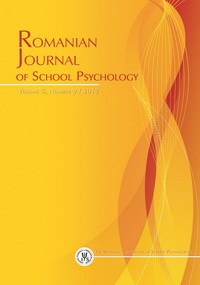Self-reported anger episodes in Romanian children, adolescents, and adults
Self-reported anger episodes in Romanian children, adolescents, and adults
Author(s): Bruno Broll-Barone, Howard KassinoveSubject(s): Psychology
Published by: Editura Universitatii din Oradea
Keywords: anger episodes; anger triggering events; children; adolescents; adults
Summary/Abstract: Anger is a basic human emotion that is typically experienced in response to aversive events. It becomes dysfunctional when it is frequent, intense, and enduring, or is expressed through aggressive behaviors. At this level, anger is associated with negative outcomes such as interpersonal, educational, and occupational difficulties, and medical problems. Yet, while we know much about adult anger, less is known about variations in anger across the age span. In this study, 69 self-reported anger episodes that were collected from Romanian children, adolescents, and adults were analyzed according the Kassinove and Tafrate’s (2002) Anger Episode Model. Results indicated that for all age groups anger was typically triggered by disappointments. Parental restrictions, particularly by mothers, were also common triggers for children and adolescents. Appraisals, in the form of shoulds, were often endorsed suggesting that anger is associated with demands on others. Adolescents were more likely to endorse appraisals related to low frustration tolerance. The anger experiences generally occurred at home, although school was a frequent site for the children and adolescents. Children reported more anger in the morning hours. Thus, for children and adolescents, anger seems to emerge in response to disappointments and restrictions attributed to mothers, and where the angry person thinks that she should have acted differently. The reported anger episodes lasted a few hours and were associated with agitation, increased heart rates, and sweating. Much of the anger, finally, was associated with negative relationship outcomes and feeling sad. Suggestions are made for prevention and treatment programs.
Journal: Romanian Journal of School Psychology
- Issue Year: 5/2012
- Issue No: 09
- Page Range: 13-29
- Page Count: 17
- Language: English
- Content File-PDF

